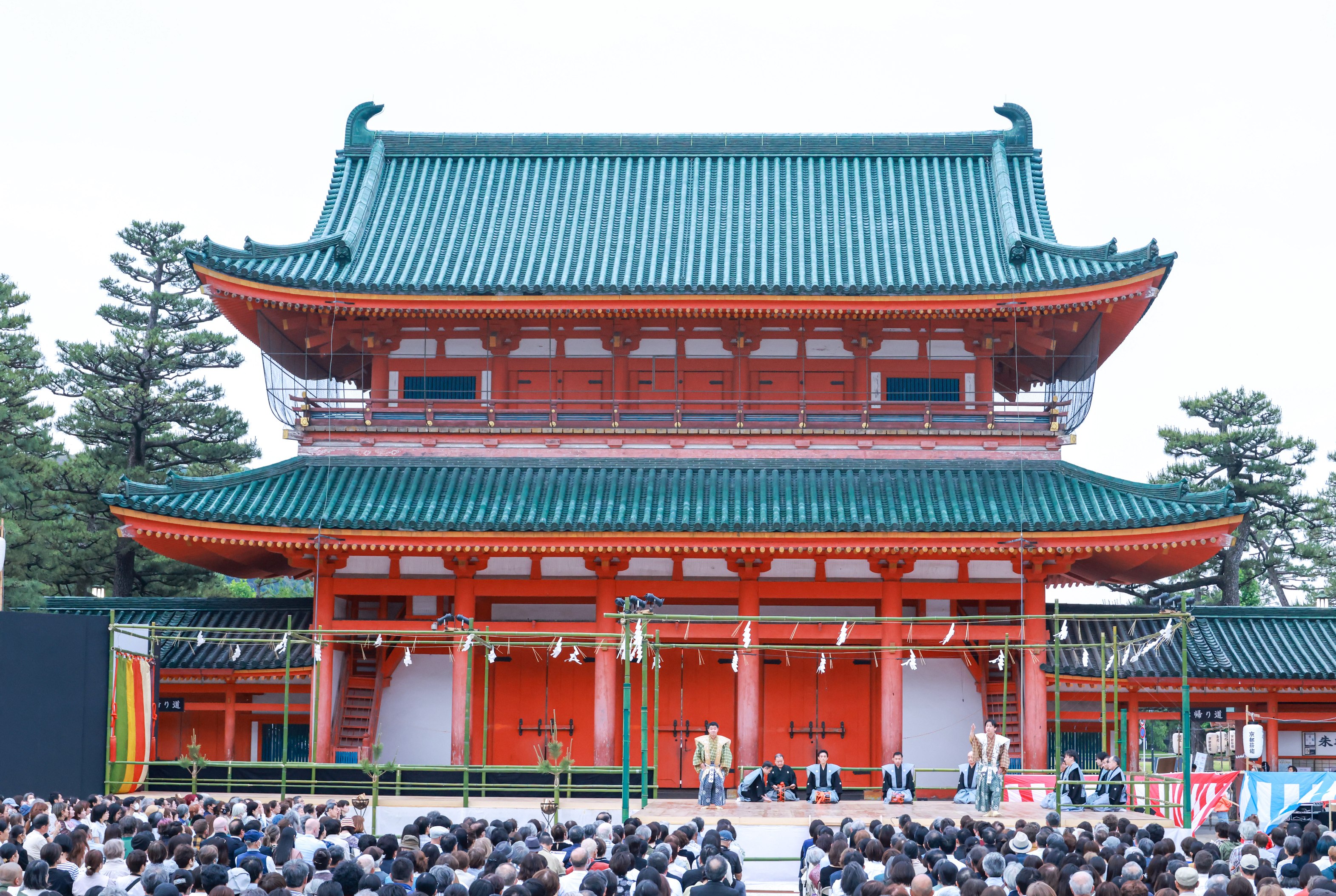The Noh dancers wore a beautiful Kimono and Japanese traditional mask while performing at Heian Shrine in Kyoto, one of the plays in 74th annual Takigi Noh in Kyoto this year.
Not only the charming story about Cherry Blossoms in Kyoto, but their Kimono also showcasing the golden era of Japanese high fashion and Kyoto's textile craftmanship.
The costumes used in noh are called noh shōzoku. The karaori, is a fine example of an exquisite outer kimono used in noh to portray women characters by male actors. Karaori means “Chinese style fabric” as it is said to be modeled after the Chinese Shokko brocade of the Ming dynasty and developed in Japan. There are the numerous rules of colour combinations, showing their social status and the role.
เหล่านักแสดงละครโนห์สวมชุดกิโมโนและหน้ากากโบราณขณะขึ้นแสดงบนเวทีที่ศาลเจ้าเฮอันในนครเกียวโต ส่วนหนึ่งของการแสดงของ "ทาคิงิ โนห์" (ละครโนห์แสดงกลางแจ้งริมคบไฟแบบโบราณ) ประจำปีครั้งที่ 74 ที่เกียวโตปีนี้
ไม่เพียงเรื่องราวที่ชวนให้เราอิ่มเอิบใจกับเสน่ห์ของดอกซากุระที่ย่านอาราชิยาม่าในเกียวโต แต่ชุดกิโมโนของเหล่านักแสดงยังสะท้อนสุนทรียภาพความงามของแฟชั่นชั้นสูงในยุคทองของญี่ปุ่น รวมทั้งงานช่างชั้นสูงของเกียวโตด้วย
เครื่องแต่งกายที่นำมาใช้ในละครโนห์เรียกว่า "โนห์ โชโซกุ" โดย "คาราโอริ" เป็นหนึ่งในชุดกิโมโนอันงามวิจิตร ใช้สวมคลุมทับชั้นนอกสำหรับตัวละครหญิง ขณะแสดงละครโนห์ "คาราโอริ" มีความหมายว่า "ผ้าแบบจีน" เนื่องจากชุดนี้มีต้นแบบมาจากผ้าไหมจีนโชโกที่ได้รับความนิยมอย่างมากในสมัยราชวงศ์หมิง นำมาผลิตในประเทศญี่ปุ่น และยังมีกฎเกณฑ์เรื่องรหัสสีที่แสดงให้เห็นสถานะทางสังคมและบทของนักแสดงด้วย
Photo/text: inStyle Asia

















 CONTACT US
CONTACT US